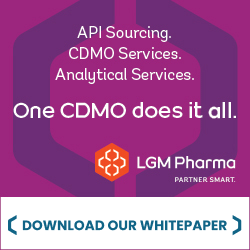
The proposed new 21st Century Cures Act could herald in a new era of drug development, with the search for a new drug shifting from research laboratories to computer systems.
Last week, we analyzed the impact of the new Act on accelerating drug development through biomarker based approvals. This week we share how generic pharmaceutical companies could create new sources of revenue through the use of Big Data.
The ability to conduct successful clinical research is what differentiates innovator pharmaceutical companies from generic manufacturers. However, the proposed 21st Century Cures Act , which has been passed by the US House of Representatives and awaits clearance from the Senate, may level the playing field to some extent with measures that seek to shift drug development from research laboratories to computer systems.
However, what seems imminent is a Big Data revolution that could be a boon for the generic business.
The proposed legislation includes a number of directives related to electronic health records (EHR) and health information exchange. The relevant sections of the Bill are designed to help drive medical innovations and create better information flow, by increasing incentives to foster interoperability between different electronic medical record systems.
Adequate focus on privacy and data sharing
The Bill aims to accelerate the development and regulatory approval of medical innovations. According to the proposed Act, electronically accessible health information and health information technology systems must also allow for secure transfer of information and allow complete access to exchange of such information.
In its current form, the Bill includes several health IT and interoperability provisions. If the vendors are not able to confirm that their EHR software complies with these interoperability provisions by January 2018, they run the risk of having their software decertified for use.
For instance, there are provisions on the pricing of transmitting data, on having application programming interfaces that provide instructions on how to access EHR data to outside users and developers; and provisions on meeting The US Department of Health and Human Services (HHS) standard of allowing "everyday" data exchange.
The big, Big Data opportunity
Electronic health records are becoming a gold mine to discover ways in which existing drugs can be repositioned or repurposed to find new indications for them. Last week, a Big Data study conducted by researchers from the Regenstrief Institute and Indiana University, found that the combination of two drugs, both available as generics, could consistently amplify blood pressure reduction in patients.
Using information from EHR of 17,291 hypertensive patients, who were prescribed the diuretic drug hydrochlorothiazide with or without triamterene, the researchers are the first to demonstrate triamterene's ability to enhance the blood pressure lowering effect of hydrochlorothiazide.
Similarly, another study which analyzed the EHR data of more than 110,000 patients suggests the commonly used anti-diabetic metformin was associated with decreased mortality after a cancer diagnosis, indicating its potential as a chemotherapeutic regimen.
Another study suggests the bestselling cholesterol lowering medicine, atorvastatin can be positioned as a new therapeutic for organ transplantation based on the retrospective analysis of EHRs of 2,515 renal transplant patients followed for up to 22 years.
Additional therapeutic benefits for existing generic drugs, is a natural extension of the current generic pharmaceutical business model which has been struggling of late to find new opportunities as more and more biologics have been getting approved.
EHRs to accelerate drug repositioning
Finding new uses for existing drugs—a process referred to as drug repurposing or repositioning – is an area which will get accelerated as more EHRs become available for computer-aided analysis.
Perhaps the most recognizable example of successful repositioning effort is Viagra (sildenafil). Originally developed as an anti-hypertensive, sildenafil was repurposed for the treatment of erectile dysfunction and pulmonary arterial hypertension. Viagra generated more than US $ 2 billion in worldwide sales in 2012.
Japanese pharma major, Otsuka paid US $ 3.5 billion to acquire the rights for repurposing the combination of an old heart drug – Quinidine – with a common cough syrup ingredient – Dextromethorphan – as a treatment for a neurological disorder called the Pseudobulbar Affect (PBA).
Since computer aided-repurposed/repositioned drugs are not protected by the same degree of intellectual property as a new chemical entity (NCE), there could be an opportunity for generic drug manufacturers to market a branded version of the generic drug.
Questions over quality and completeness of data
A new indication for an existing drug still requires navigating through hurdles created by the regulatory pathways in different countries. The use of EHRs in regulatory submissions will raise questions about the quality and completeness of data entered into an electronic health record.
Under the current industry standard, clinical studies are controlled by various organizations to ensure the data collected during the trial meets the stringent norms of the regulatory agencies. However, EHRs do not undergo the same degree of rigor when it comes to data entry.
It remains to be seen how regulatory agencies will process applications based on EHRs.
Moreover, security of patients’ health information coupled with access restrictions will play a very large role in determining how much of this data will become available for analysis. If patients choose not to share their information, an incomplete data set of records can lead to incorrect conclusions.
A string of Big Data initiatives
The focus of computer-based research is not only on drug repositioning but also on new drug development.
The National Institute of Health (NIH) in the United States has already launched a Big Data website to allow biomedical researchers to capitalize on research from various communities.
Following this, in March, the NIH launched an Alzheimer’s Big Data portal in an effort to accelerate drug development against a disease where currently the industry’s success rate has been about 0.4 percent.
Other than the government, there is Optum Labs – a research collaborative that has brought together data from the administrative claims of more than 100 million patients and the EHR of over 30 million patients, along with researchers, patient advocates, policy makers, providers, payers, and pharmaceuticals and life sciences companies. The vision of Optum Labs is to boost the generation of high-quality comparative-effectiveness evidence, accelerate translation of knowledge into the development of new predictive models and tools, and improve the delivery of care.
Our view
New indications for existing drugs is an extremely lucrative business opportunity. Analysis of EHRs to reach conclusions without having to conduct expensive laboratory research is a prospect definitely worth evaluating.
However, since most of the data is available in the open domain, the intellectual property generated would be limited. For this reason, the business model should appeal a lot more to generics than to innovator companies who rely extensively on patents to drive their business. Regardless of who seizes the opportunity first, the Big Data era has arrived.
The PharmaCompass Newsletter – Sign Up, Stay Ahead
Feedback, help us to improve. Click here
Image Credit : Future Past + Presence by Hartwig HKD is licensed under CC BY 2.0
“ The article is based on the information available in public and which the author believes to be true. The author is not disseminating any information, which the author believes or knows, is confidential or in conflict with the privacy of any person. The views expressed or information supplied through this article is mere opinion and observation of the author. The author does not intend to defame, insult or, cause loss or damage to anyone, in any manner, through this article.”







